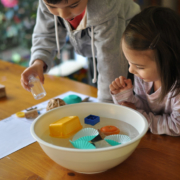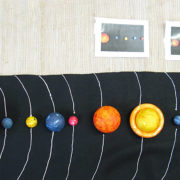Cultural Studies: Science (Living & Non-Living)
Embedded in the heart of Montessori learning is the idea that children are naturally curious and it’s our job, as parents and directresses, to nurture this innate desire to explore and discover. Our Science lesson on ‘Living and Non-Living’ will not only help children to classify their world and develop a sense of order but will also inspire their natural curiosity.

To try this activity at home, you’ll need: two labelling cards – one that says Living and one that says Non-living, and a series of pictures that can be applied to each category.
Before you start the exercise, explain to your child the difference between something that is living and something that is non-living. So, the characteristics of a living thing are that it grows, it needs food and it can reproduce; something non-living does not grow, need food or reproduce. Don’t worry if your child seems to struggle with the concepts; the exercise encourages understanding! Have a look at the below tutorial by My Montessori Works to see how it works:
The tutorial shows how children use the aforementioned characteristics to differentiate something living from something non-living. As you show them a picture, the child will ask: does it grow, does it need food and does it reproduce? The answer no will indicate something non-living and the answer yes will is indicative of something living.
Pictures of plants are particularly interesting because your child will have to think laterally to answer the questions: does a plant need food, for example? Plants don’t need a slice of pizza or sandwich but a plant does need water and sunlight to grow – which are, perhaps, less obvious forms of ‘food’.
A fun extension to this activity is to get your child to look around the house, inside and out, for an array of things that you can then classify as living or non-living.
If you’d like further information about this tutorial, feel free to contact us at info@saintandrewsmontessori.com. We’re happy to answer any questions.
Photo credit: Docdroid.net












